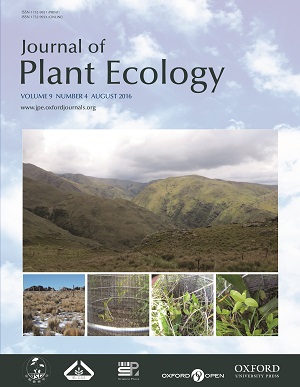Current Issue
-
 Volume 9 Issue 4
Volume 9 Issue 4
Sierras Grandes Mountains of Córdoba (central Argentina), where Tecco et al. performed an experimental approach of seed addition to address whether three major woody invaders of low-mountain areas are constrained to lower altitudes due to climatic restrictions or just by low propagule pressure. The experimental plots were placed along an altitudinal gradient ranging from 900 masl up to the highest altitude of the mountain range, at 2700 m a.s.l. The main picture shows the general view at 1600 m a.s.l. elevation in spring time, with an experimental plot (livestock exclosure) at the mid-left section of the picture. At the bottom (from left to right) an experimental plot at the highest elevation (2700 m a.s.l.) in autumn, followed by pictures of seedlings of the three exotic species grown within cages (Gleditsia triacanthos, Pyracantha angustifolia and Ligustrum lucidum, respectively).
IF: 3.9
CiteScore: 5.7
CiteScore: 5.7
Editors-in-Chief
Yuanhe Yang
Bernhard Schmid
Yuanhe Yang
Bernhard Schmid
CN 10-1172/Q
ISSN 1752-9921(print)
ISSN 1752-993X(online)
ISSN 1752-9921(print)
ISSN 1752-993X(online)







